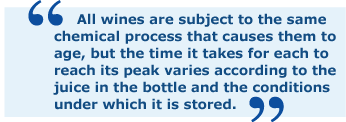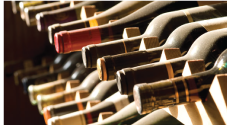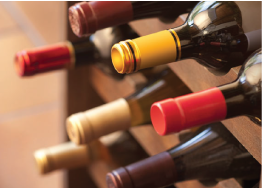
As you Begin
You have chosen to view all of the coursework online, paging through the topics for this course by navigating through this site. You'll be able to toggle through the pages using the forward or backward buttons, or head back to page one using the icon at the bottom center of each page. Remember, all the coursework is available in printable pdf format on page one, in case you need to study on the go or take notes.

Review Beginner Varietals
A document that covers entry level varietal knowledge should be reviewed in preparation for the Beginner Wine Exam. Find it here >


Content Contributed by Brice Dowling, Imperial Beverage
The term “aging like fine wine”, although in common usage, is a derivative of a practice and process not so commonly understood. All wines are subject to the same chemical process that causes them to age, but the time it takes for each to reach its peak varies according to the juice in the bottle and the conditions under which it is stored. For best results when storing wine, one must consider how wine ages, which wines are candidates for cellaring, and where wine should be stored.
Wine ages as oxygen interacts with the acids, sugars, minerals, and other compounds found in the wine. These oxidized compounds form larger, more complex molecules that change both scents and flavor profiles. Sufficient oxygen to stimulate the aging process is found dissolved in the liquid and in the headspace between the wine and the cork.
 
Some wines are more suitable than others for cellaring, the practice of storing wine in a controlled environment until it has matured to its peak drinking age. Consumer demand dictates that most wine is produced to be drunk within a year of bottling. However, the best (and, typically, most expensive) wines of the world are sold well before they have reached their peak. For reds, these tend to be highly tannic wines from dryer vintages or regions. The best Old World examples are Crus Classes of Bordeaux, Chateauneuf-du-Pape, Barolo, Brunello di Montalcino, Chianti Classico Riserva, Ribera del Duero, and Rioja; while the New World offers Cabernet from California, along with Zinfandel, Merlot, and Pinot Noir, and Malbec from Argentina.
 Contrary to some notions, reds are not the only wines suitable for cellaring. Many whites with high acidity and sufficient structure are also age-worthy. Sweet fortified wines are often good candidates for aging, as well. Contrary to some notions, reds are not the only wines suitable for cellaring. Many whites with high acidity and sufficient structure are also age-worthy. Sweet fortified wines are often good candidates for aging, as well.
Those wines that are worth waiting years to drink should be properly stored in order to maximize their maturation process. The basic principles of wine storage include light restriction, temperature stability, and moderate humidity. Consistent direct light will cause undesirable chemical reactions, as will fluctuations in temperature. 50°F, plus or minus 10°, is the optimal temperature; but consistency is the most important factor. Heat does increase the maturation process, and temperatures exceeding 90°F should be avoided.
As oxygen is the agent in aging wine, air exposure to the liquid must be limited. For this reason, and because many wine bottles still use a cork closure, some moisture in the air is beneficial. This keeps the cork from drying out and letting more air into the bottle. This is the same reason that wine bottles are best stored on their sides, or even upside down. Large format bottles are oftentimes preferred due to the lower ratio of air in the bottle to volume (and surface area), thus slowing the oxidative process on the wine. the bottle. This is the same reason that wine bottles are best stored on their sides, or even upside down. Large format bottles are oftentimes preferred due to the lower ratio of air in the bottle to volume (and surface area), thus slowing the oxidative process on the wine.
While many professionals and collectors rely on specially built and maintained facilities to store and protect their wine during the maturation process, any place fulfilling these principles would work. One of the easiest places to convert to a wine storage area in many homes is underneath the basement stairs, hence the term cellaring. So long as this spot is not near a window, furnace, dehumidifier, etc., a converted staircase may allow even a novice enthusiast to begin a collection, all of which have begun with a single bottle.

|
